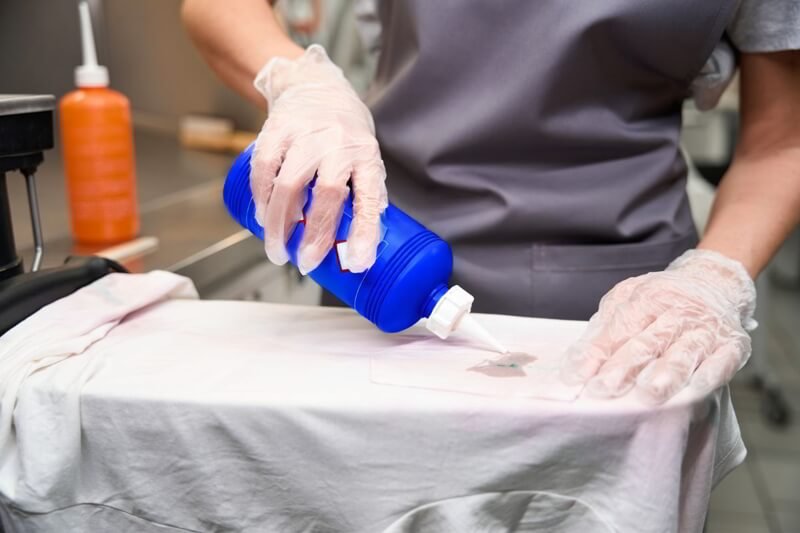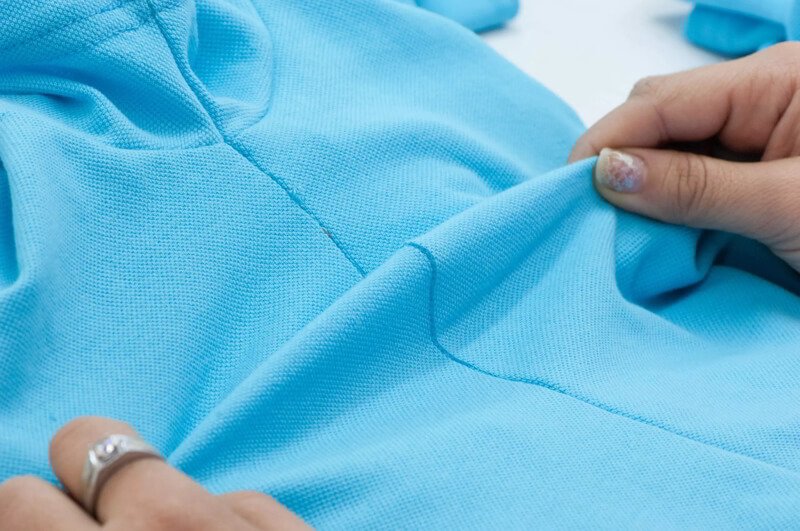No Care Label? How to Wash Clothes Safely and Effectively
You’ve got a favorite garment, but there’s a problem: the care label is missing! Whether it’s a vintage treasure, a hand-me-down, a handmade gift, or you simply removed the tag yourself, figuring out how to safely clean clothing without instructions can be daunting. The fear of ruining a cherished item by causing shrinkage, color bleeding, or irreversible damage is real. Washing clothes incorrectly can lead to wasted money and the loss of irreplaceable pieces.
This guide is your lifeline for confidently cleaning clothes without care labels. You’ll learn how to assess the risks involved, identify potential fabric types by feel and appearance, and choose the most appropriate cleaning method, whether it’s gentle handwashing, cautious machine washing, or seeking professional dry cleaning. We’ll provide step-by-step instructions and expert tips to help you preserve your garments and keep them looking their best, without the guesswork.
1. The mystery of the missing care label
That missing care label can trigger laundry anxiety! But don’t worry, it’s a common problem, and it is possible to safely clean clothes without those instructions. With a little knowledge and care, you can keep your mystery garments looking their best. Let’s solve the puzzle together.
2. Why care labels go missing: More than just a cut tag
Missing care labels aren’t always a case of deliberate removal. Several factors can contribute to this laundry dilemma.
2.1 Intentional removal: The itch factor
One common reason is simple discomfort. Many people find care labels itchy or irritating against their skin, leading them to cut the tags out. Others remove labels for aesthetic reasons, preferring a cleaner look, especially on sheer or delicate garments.

2.2 Faded or illegible labels: The test of time
Even when labels are present, they can become faded or illegible over time. Repeated washing, drying, and general wear can degrade the printing on the label, making it impossible to decipher the care instructions.
2.3 Exemptions and exceptions: When labels aren’t required
Surprisingly, not all clothing items are legally required to have permanent care labels. The Federal Trade Commission (FTC) has specific exemptions, including:
- Totally reversible clothing without pockets: These only need a temporary label at the point of sale.
- Products washable/dry-cleanable by any normal method: As long as a temporary label states, “Wash or dry-clean, any normal method.”
- Products granted specific exemptions by the FTC: This requires a written application and a labeled sample, and is granted if the label would harm the item’s appearance or usefulness.
- Products sold to institutional buyers for commercial use: For example, uniforms not purchased by the employees.
- Garments custom-made from material provided by the consumer.
- Completely washable products sold at retail for $3 or less under the original rule
2.4 Handmade or internationally sourced items
Handmade clothing, especially items purchased from independent artisans or craft fairs, may not come with standard care labels. Similarly, garments sourced from certain countries, particularly those made for domestic use within those countries, may lack the detailed care instructions common in other markets.
3. Decoding the garment: Becoming a fabric detective
Before you even think about washing, try to identify the fabric. This will significantly inform your cleaning choices. Here’s how to play detective:
3.1 The visual inspection: Look and learn
Start by carefully examining the garment:
- Shine: Does the fabric have a noticeable sheen (like silk or satin), or is it matte?
- Texture: Is it smooth, rough, napped (like velvet or corduroy), or textured in some other way?
- Drape: How does the fabric fall? Does it drape fluidly, or is it stiff and structured?
These visual clues can provide initial hints about the fiber content.

3.2 The touch test: Feeling your way to fabric ID
Now, engage your sense of touch:
- Smoothness/Roughness: Does the fabric feel smooth and silky, or rough and textured?
- Warmth/Coolness: Some fibers (like wool) feel naturally warm to the touch, while others (like linen and silk) feel cool.
- Stretch: Does the fabric have any give or stretch?
Here’s a quick guide to common fabric feels:
- Cotton: Generally soft and relatively breathable.
- Linen: Crisp, cool, and often slightly stiff.
- Wool: Can range from soft to slightly scratchy, and feels warm.
- Silk: Smooth, cool, and often has a luxurious drape.
- Polyester: Can vary widely, but often feels smooth and slightly slippery.
3.3 The burn test: A last resort (with cautions!)
The burn test is destructive and should only be used as a last resort, and with extreme caution. If you choose to do this, snip a tiny piece of fabric from a hidden area, like an inside seam allowance.
Safety Precautions:
- Perform the test over a fireproof surface (like a ceramic plate).
- Ensure good ventilation.
- Use a small sample of fabric.
- Have water nearby in case of uncontrolled burning.
How Different Fibers Burn:
- Cotton/Linen/Rayon: Burn quickly with a bright flame, smell like burning paper, and leave a soft, gray ash.
- Silk/Wool: Burn slowly, smell like burning hair, and leave a dark, crushable bead.
- Synthetics (Polyester, Nylon, Acrylic): Tend to melt and fuse rather than burn with a true flame, often smell like plastic or chemicals, and leave a hard, plastic-like bead.
3.4 Combining clues: Making an educated guess
No single test is foolproof. The most reliable fabric identification comes from combining the clues from your visual inspection, touch test, and (if necessary and safely performed) burn test. For example, a fabric that looks shiny, feels smooth and cool, and melts when burned is likely a synthetic like polyester or nylon. A fabric that feels soft, has a matte appearance, and burns with an ashy residue is likely cotton.
4. Cleaning strategies: From gentle handwashing to professional care
With an educated guess about your fabric’s composition, you can choose a cleaning method. Here are your options, from safest to slightly riskier:
4.1 When in doubt, dry clean: The safest option
If you’re unsure about the fabric content or concerned about potential damage, professional dry cleaning is the safest option. Dry cleaners have expertise in identifying fabrics and use specialized cleaning solutions and equipment that are gentler than typical home washing methods. They can often determine the best approach based on the garment’s construction, fiber content, and any embellishments.
A good dry cleaner is like a fabric whisperer. They can often identify a fabric and its best cleaning method just by looking at it and feeling it. Don’t hesitate to seek their help if you’re unsure.

4.2 The gentle handwashing method: A step-by-step guide
For many fabrics, gentle handwashing is a safe and effective cleaning method. Here’s a step-by-step guide:
- Prepare: Clean a sink, tub, or basin.
- Water Temperature: Fill the basin with cool or cold water. Hot water can damage many fabrics.
- Detergent: Add a small amount of mild detergent (about a teaspoon to a tablespoon, depending on the size of the garment and the amount of water).
- Soak: Submerge the garment in the soapy water and let it soak for a short time (around 10 minutes).
- Gentle Agitation: Gently press and agitate the fabric to loosen dirt. Do not wring or twist the garment, as this can damage the fibers.
- Rinse: Drain the soapy water and refill the basin with clean, cool water. Rinse the garment thoroughly, repeating until all traces of detergent are gone.
- Water Removal: Gently squeeze out excess water. Do not wring. Roll the garment in a clean, absorbent towel to remove more moisture.
- Drying: Reshape the garment and air dry it flat on a clean, dry towel or lay it on a drying rack. Avoid direct sunlight or heat, which can cause fading or shrinkage.
Odor Removal (Handwashing):
- Baking Soda: Add 1/4 to 1/2 cup of baking soda to the wash water to help neutralize odors.
- White Vinegar: Add 1/2 cup of white vinegar to the rinse water. (Do not use baking soda and vinegar together.) Vinegar can also help set dyes, particularly useful for embroidered items.
4.3 Machine washing: A calculated risk
Machine washing without a care label is riskier than handwashing, but it may be possible for some fabrics that you’ve identified as likely being durable (e.g., cotton, linen, some synthetics). If you choose to machine wash, take these precautions:
- Delicate Cycle: Use the delicate cycle or a cycle with low agitation.
- Cold Water: Always use cold water to minimize the risk of shrinkage or color bleeding.
- Mild Detergent: Use a mild detergent formulated for delicate fabrics.
- Mesh Laundry Bag: Place the garment in a mesh laundry bag for added protection against snagging or damage.
4.4 Special considerations for delicate fabrics
Certain fabrics require extra care:
- Silk: Handwash is strongly recommended. Use a very small amount of gentle detergent, preferably one specifically designed for silk. Add a tablespoon of white vinegar to the rinse water to help prevent a matte finish. Do not soak for too long; keep the washing process brief. Maintain a consistent cold or lukewarm water temperature. A steamer on a very low setting, held at a safe distance, can help restore softness after air drying.
- Wool: Handwash or dry clean. If handwashing, use cool water and a gentle detergent specifically for wool. Avoid agitation and never wring.
5. Assessing risk and minimizing damage
Before cleaning any garment without a care label, take a moment to assess the potential risks. Consider these factors:
- Fabric Type: Your best guess at the fabric content (based on visual inspection, touch, and potentially a burn test) will heavily influence your cleaning choices.
- Garment Construction: Is the garment intricately constructed with delicate seams, linings, or embellishments? This may indicate a need for extra care.
- Type of Soil/Stain: Is the garment simply in need of freshening, or are there specific stains that require treatment?
- Dyes Used and Colorfastness: Are the colors vibrant and potentially prone to bleeding?
- Trims and Embellishments: Are there any delicate trims, beads, sequins, or other embellishments that could be damaged by washing?
Testing: If attempting home cleaning for the first time on an unlabeled garment, it’s wise to test your chosen cleaning method on a small, inconspicuous area first (like an inside seam or hem). This allows you to observe how the fabric reacts before cleaning the entire garment.

6. FAQs about washing clothes without care labels
6.1 Can I use fabric softener on clothes without care labels?
Generally, it’s best to avoid fabric softener unless you’re certain of the fabric type and know it can tolerate it. Fabric softener can damage some synthetic fibers, leave a residue on certain fabrics, and interfere with the absorbency of materials like cotton.
6.2 How can I tell if a garment will shrink?
Unfortunately, it’s difficult to know for sure if a garment will shrink without a care label. The burn test can offer some clues (synthetics tend to melt rather than burn, making them less prone to shrinking), but it’s not definitive. The safest approach is to always use cold water and air dry unlabeled garments to minimize the risk of shrinkage.
6.3 What if my clothes bleed color even after washing in cold water?
Some dyes are simply not colorfast, regardless of the water temperature. If you experience color bleeding, consider using color catcher sheets in future washes (both hand and machine). These sheets help absorb loose dye and prevent it from transferring to other items.
6.4 Is it okay to iron clothes without a care label?
Ironing without a care label requires caution. Use the lowest heat setting on your iron and test on an inconspicuous area first. Avoid ironing delicate fabrics like silk or synthetics that could be damaged by heat. If in doubt, skip the ironing or use a pressing cloth.
6.5 Should I always hand wash vintage clothes?
Generally, yes, hand washing is the safest approach for vintage clothes, especially if they are delicate, have embellishments, or are made of unknown fabrics. Alternatively, take them to a dry cleaner specializing in vintage garments. Vintage fabrics and construction methods may be more fragile than modern clothing.
7. Packlove – Providing service for clothing labels
While knowing how to care for garments without labels is important, ideally, all clothing should have clear care instructions. Packlove specializes in providing high-quality, custom labels and tags for clothing brands.
With over 8 years of experience in the garment industry, particularly in processing labels and tags, we understand the importance of clear and accurate garment care information. We also offer zipper bags and poly mailers. We can help you choose the best labeling solutions to meet your needs and ensure your customers can properly care for their purchases.
Visit Packlove to explore our services and contact us for a quote or consultation.
Read more:
Washing clothes without care labels requires a degree of caution, careful observation, and educated guesswork. Attempting to identify the fabric type, choosing the gentlest cleaning method appropriate for the likely fabric, and testing in an inconspicuous area are crucial steps. When in doubt, professional dry cleaning is always the safest option. By taking a thoughtful approach, you can preserve your unlabeled garments and keep them looking their best for years to come.






















